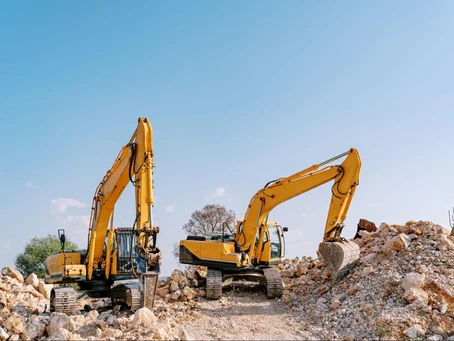Top Crane Safety Practices for a Secure Construction Environment
Starting a construction project brings excitement, but prioritizing safety is crucial from the very beginning. Cranes, essential for handling large and heavy loads, demand rigorous safety measures due to their substantial power and potential hazards. Whether you are a crane operator, a site supervisor, or an employer, understanding and implementing best practices for crane safety is vital to prevent accidents and ensure successful operations.
Adhering to Industry Standards and Regulations
Cranes operate under significant stress and weight, necessitating strict adherence to safety regulations and standards. Here’s a look at the regulatory framework that governs crane safety:
- Regulatory Bodies: Agencies like OSHA (Occupational Safety and Health Administration) in the U.S. and the ECOL (European Committee for Standardization) in Europe set and enforce safety standards for crane operations.
- Load Capacity Limits: Establishing and adhering to maximum load limits is critical to prevent crane failures and accidents.
- Inspection Protocols: Regular inspections help identify potential issues before they lead to accidents. Ensuring thorough checks can prevent equipment malfunctions.
- Operator Certifications: Certification programs verify that crane operators are skilled and knowledgeable, ensuring safe crane usage.
- Training Programs: Comprehensive training is essential for operators to understand safety procedures, emergency responses, and hazard recognition.
- Safety Protocols: Following established safety protocols, including proper equipment handling and emergency procedures, is crucial for accident prevention.
- Technological Advancements: Modern safety technologies, such as anti-collision systems and remote monitoring, enhance safety standards.
Ensuring Safe Crane Operations
Effective crane operation involves managing risks and maintaining a safe work environment. Here are key principles to ensure crane safety:
- Accident Prevention: Proper crane management is essential to avoid accidents that can result in injuries, fatalities, or property damage.
- Legal Compliance: Adherence to local and international regulations avoids legal penalties and ensures smooth operations.
- Worker Safety: Ensuring safety protocols protect crane operators and other workers involved in crane operations.
- Boosting Productivity: Safe crane operations lead to higher productivity and efficiency on job sites by reducing accidents and downtime.
- Reputation Management: A strong safety record builds trust with clients and regulatory bodies, potentially leading to more business opportunities.
Avoiding Common Crane Operation Mistakes
Mistakes during crane operations can have serious consequences. Here are seven common errors to avoid:
- Skipping Pre-Operation Inspections: Failing to inspect cranes before use can lead to missed issues that compromise safety.
- Inadequate Training: Operating cranes without proper training increases the risk of accidents. Ensure operators are well-trained and certified.
- Exceeding Load Limits: Overloading cranes can cause equipment failures and tip-overs. Always adhere to load capacity guidelines.
- Poor Communication: Miscommunication among personnel can lead to accidents. Establish clear communication channels and protocols.
- Neglecting Maintenance: Regular maintenance is crucial to prevent mechanical failures and safety risks.
- Unsafe Work Practices: Avoid risky behaviors, such as standing under lifted loads or entering dangerous zones.
- Ignoring Environmental Conditions: Consider weather and ground conditions, as they can impact crane stability and operations.
Implementing Effective Crane Safety Measures
To maintain a secure work environment, follow these best practices for crane safety:
- Training and Certification: Ensure that all crane operators and involved personnel receive thorough training and certification.
- Pre-Operation Inspections: Conduct detailed inspections before each crane use to identify any issues.
- Clear Communication: Establish and maintain effective communication between all team members involved in crane operations.
- Safe Work Zones: Define and control access to safe work zones around cranes to prevent unauthorized entry.
- Load Management: Properly assess and manage load weights to prevent overloading and tipping.
- Adverse Weather Protocols: Implement procedures for ceasing crane operations during adverse weather conditions.
Training Employees on Crane Safety
Effective crane safety training is essential for reducing risks and ensuring a safe work environment. Here’s how to train employees effectively:
- Identify Training Needs: Assess the specific needs of employees based on their roles and experience levels.
- Comprehensive Training: Develop a detailed training program covering all aspects of crane safety.
- Experienced Instructors: Use qualified instructors with practical experience in crane operations and safety.
- Hands-On Training: Provide practical training opportunities to apply theoretical knowledge in real-world scenarios.
- Hazard Recognition: Train employees to identify and mitigate potential hazards associated with crane operations.
- Promote Communication: Emphasize the importance of clear communication and coordination among team members.
- Continuous Learning: Offer refresher courses and updates to keep employees informed of the latest safety practices.
Enhancing Workplace Safety
Fostering a culture of safety in crane operations is vital for protecting personnel and property. By implementing best practices, conducting regular training, and adhering to safety protocols, you can significantly reduce the risk of accidents and enhance overall safety on the job site.
For more insights on crane safety, crane rental, truck transportation, and industry best practices, visit our SMCLR, A Crane Co. blog.


Leave a Comment